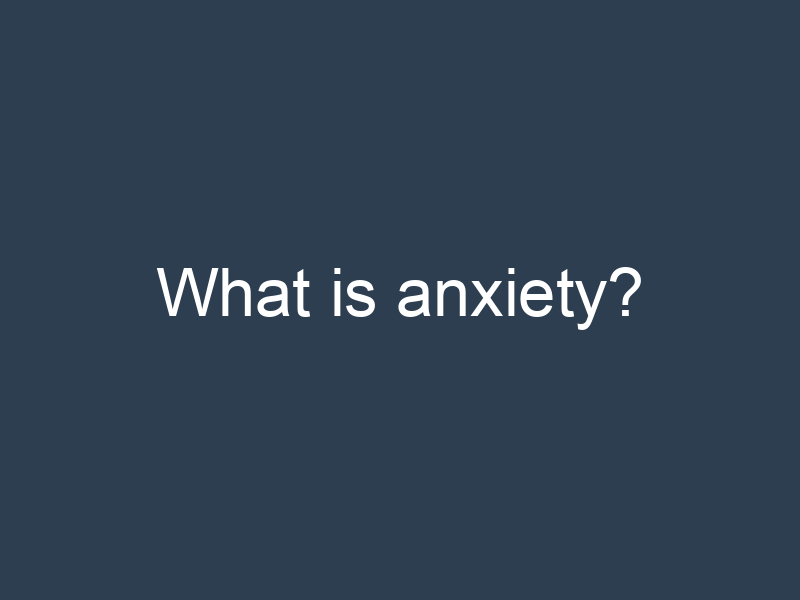What is anxiety?
Anxiety is a natural response for survival. Anxiety is a response to perceived threat or danger, causing unease and worry. Excessive anxiety can be a mental health disorder, while mild anxiety can be normal and helpful in some situations.
Anxiety disorders are mental health conditions with excessive worry and fear. They greatly affect daily life, hindering functioning and normal activities. Anxiety disorders are treatable. You should visit the best psychiatrist in Lahore.
Common anxiety disorders include:
• GAD: Excessive worry about life without a trigger.
• Panic Disorder: People have sudden intense fear episodes with physical symptoms like rapid heartbeat, shortness of breath, and dizziness.
• Social Anxiety Disorder, or social phobia, is an intense fear of social situations and being judged, resulting in avoidance of social interactions.
• Specific phobias are intense fears of certain things like heights, spiders, flying, or enclosed spaces. They are irrational and can cause a lot of distress.
• OCD: Intrusive thoughts and repetitive behaviors performed to alleviate anxiety.
• PTSD: It can occur after a traumatic event and causes flashbacks, nightmares, and anxiety.
• Separation Anxiety Disorder: Common in kids, causes extreme distress when away from caregivers or loved ones.
Agoraphobia is the fear of situations where escape is difficult or embarrassing, leading to avoidance of crowded areas or open spaces.
Anxiety disorders have multiple causes, including genetics, environment, and psychology. Anxiety disorders are treatable. Therapy options for anxiety include CBT, medication, lifestyle changes, and relaxation techniques. They can help manage anxiety and improve well-being. If you’re struggling with anxiety, seek help from a mental health professional.
Symptoms.
Anxiety symptoms differ based on disorder type and individual experience. Common symptoms of anxiety include emotional, cognitive, physical, and behavioral changes.
Symptoms:
• Excessive anxiety about everyday situations or specific events.
• Restlessness and uneasiness.
• Trouble focusing due to racing thoughts.
• Irritability and mood changes.
• Expecting the worst in different situations.
• OCD: Intrusive thoughts (obsessions).
• PTSD symptoms: flashbacks, nightmares, emotional distress.
• Fast heartbeat or palpitations.
• Breathlessness or trouble breathing.
• Chest discomfort.
• Sweating, trembling, shaking.
• Stomach upset, nausea, or digestion problems.
• Muscle pain.
• Feeling dizzy or lightheaded.
• Behav. Symptoms:
• Avoiding anxiety triggers.
• OCD rituals to reduce anxiety.
• Avoiding social interactions in social anxiety disorder.
• Panic attacks: sudden fear and physical symptoms.
Occasional anxiety is normal, especially in stressful situations. When these symptoms persist, become excessive, and disrupt daily life, they may suggest an anxiety disorder.
If you or someone you know has severe anxiety symptoms, seek professional help. Mental health professionals diagnose and treat symptoms and challenges.
Causes.
Anxiety disorders are influenced by genetics, environment, psychology, and neurology. Anxiety disorders are complex and have multiple causes. Factors in anxiety disorder development:
A family history of mental health conditions can increase the risk of developing anxiety disorders. Genetic traits can increase vulnerability.
Neurobiology and Anxiety: Imbalances in neurotransmitters like serotonin, dopamine, and GABA may contribute to anxiety disorders. Neurotransmitters regulate mood, emotions, and stress response.
Personality traits like perfectionism, excessive control, and overthinking can increase the likelihood of anxiety disorders.
Trauma and stress can increase anxiety disorder risk. Examples include abuse, accidents, disasters, and loss. Stress and life challenges can also contribute.
Family environments with mental health issues can affect the development of anxiety disorders. Chronic stress, poverty, and adverse conditions can also contribute.
Brain research suggests that anxiety disorders may be linked to differences in certain brain regions involved in fear response and emotion regulation, like the amygdala and prefrontal cortex.
Medical conditions like thyroid disorders, heart conditions, and chronic pain can worsen anxiety symptoms.
Substance abuse can worsen anxiety. Substance use can cause anxiety disorders.
Cognitive factors like negative thinking, distorted perceptions, and excessive worry can worsen anxiety symptoms.
Observing anxious behaviors in childhood can impact anxiety disorder development. Children learn anxiety from parents or caregivers.
Anxiety disorders are complex and multifaceted, often caused by various factors. Different people may have different triggers for anxiety disorders. Seek professional help for anxiety. It’s important to assess causes and develop a treatment plan.
Conclusion
Anxiety is a natural response to threats. Excessive anxiety can develop into an anxiety disorder if it persists and interferes with daily life. Different anxiety disorders have distinct symptoms and challenges. Disorders: Generalized Anxiety, Panic, Social Anxiety, Specific Phobias, OCD, PTSD, Separation Anxiety, Agoraphobia.
Anxiety disorders show emotional, cognitive, physical, and behavioral symptoms. Emotional symptoms: worry, fear. Cognitive symptoms: racing thoughts, difficulty concentrating. Symptoms: fast heartbeat, breathlessness, muscle tension. Behavioral symptoms include avoiding triggers or performing rituals to reduce anxiety.
Anxiety disorders have various causes including genetics, brain chemistry, personality traits, trauma, environment, brain structure, medical conditions, substance abuse, cognition, and learned behaviors.
Be empathetic and understanding towards anxiety disorders. Seek professional help for severe or chronic anxiety. Mental health pros diagnose and treat anxiety with therapy, meds, lifestyle changes, and coping strategies. With proper help, people can handle anxiety and enhance their well-being.
FAQs
Difference between everyday anxiety and anxiety disorder?
Anxiety is a normal reaction to stress and usually goes away when the stress is gone. Anxiety disorders involve excessive worry or fear without clear triggers, which can disrupt daily functioning.
Can kids and teens have anxiety disorders?
Anxiety disorders can impact people of all ages, including kids and teens. Childhood anxiety disorders can include separation anxiety, specific phobias, and generalized anxiety.
What’s a panic attack?
A panic attack is a sudden intense fear or discomfort that peaks quickly. Panic attacks have physical symptoms like fast heartbeat, sweating, trembling, short breath, and impending doom.
Can anxiety be treated?
Anxiety disorders are treatable. Therapy and medication can help with anxiety and improve life quality.
Can lifestyle changes help with anxiety?
A healthy lifestyle helps with anxiety. Exercise, nutrition, sleep, stress reduction techniques (meditation, deep breathing), and avoiding excessive caffeine and alcohol help manage anxiety.







